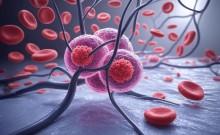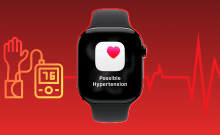As advances are being made in the space of COVID testing, which is a crucial first step towards prevention and eventually cure, engineers from the Massachusetts Institute of Technology and Harvard University have developed a special kind of face mask, which diagnoses COVID-19 virus of those who wear it in a matter of minutes.
According to the study published in Nature Biotechnology, the engineers developed tiny disposable sensors that can be fitted inside a piece of clothing or even face masks. They are calling these sensors Specific High-sensitivity Enzymatic Reporter unLOCKing, in short SHERLOCK. These sensors enable a seamless and efficient way of monitoring exposure to the virus.

The development of wearable sensors began years ago to help diagnose Ebola and Zika viruses. James Collins, the Termeer Professor of Medical Engineering and Science in MIT's Institute for Medical Engineering and Science (IMES) and Department of Biological Engineering, is the lead author in the study.
How SHERLOCK sensors work?
The tiny sensors are freeze-dried and surrounded by a reservoir of water. When the wearer pushes a button, the water is released the sensors are ready to test. When the freeze-dried components are hydrated, they analyse the breath droplets. The testing then begins for COVID-19.
This method of testing is as sensitive as PCR test, which is currently the gold standard for COVID testing. But these sensors can diagnose COVID in just 90 minutes, which is faster than the antigen tests.
"We have essentially shrunk an entire diagnostic laboratory down into a small, synthetic biology-based sensor that works with any face mask, and combines the high accuracy of PCR tests with the speed and low cost of antigen tests," said co-first author Peter Nguyen PhD, a research scientist at the Wyss Institute. "In addition to face masks, our programmable biosensors can be integrated into other garments to provide on-the-go detection of dangerous substances including viruses, bacteria, toxins, and chemical agents."
![SHERLOCK of face masks; diagnosing COVID with used mask in 90 minutes [how it works]](https://data1.ibtimes.co.in/en/full/763079/sherlock-face-masks-diagnosing-covid-used-mask-90-minutes-how-it-works.jpg?w=695&h=401&l=50&t=40)
The new testing methodology consists of three reactions. The first is to open the virus' membrane to expose its RNA, then comes the amplification step by making copies of the Spike-coding gene and finally the SHERLOCK technology kicks in to detect any Spike gene fragments. The results are easy to read at home, similar to an at-home pregnancy test, where a single line means COVID positive and two lines mean negative.
The face masks with SHERLOCK technology are not available as yet in the market, but the team is looking for manufacturing partners to mass-produce them.














